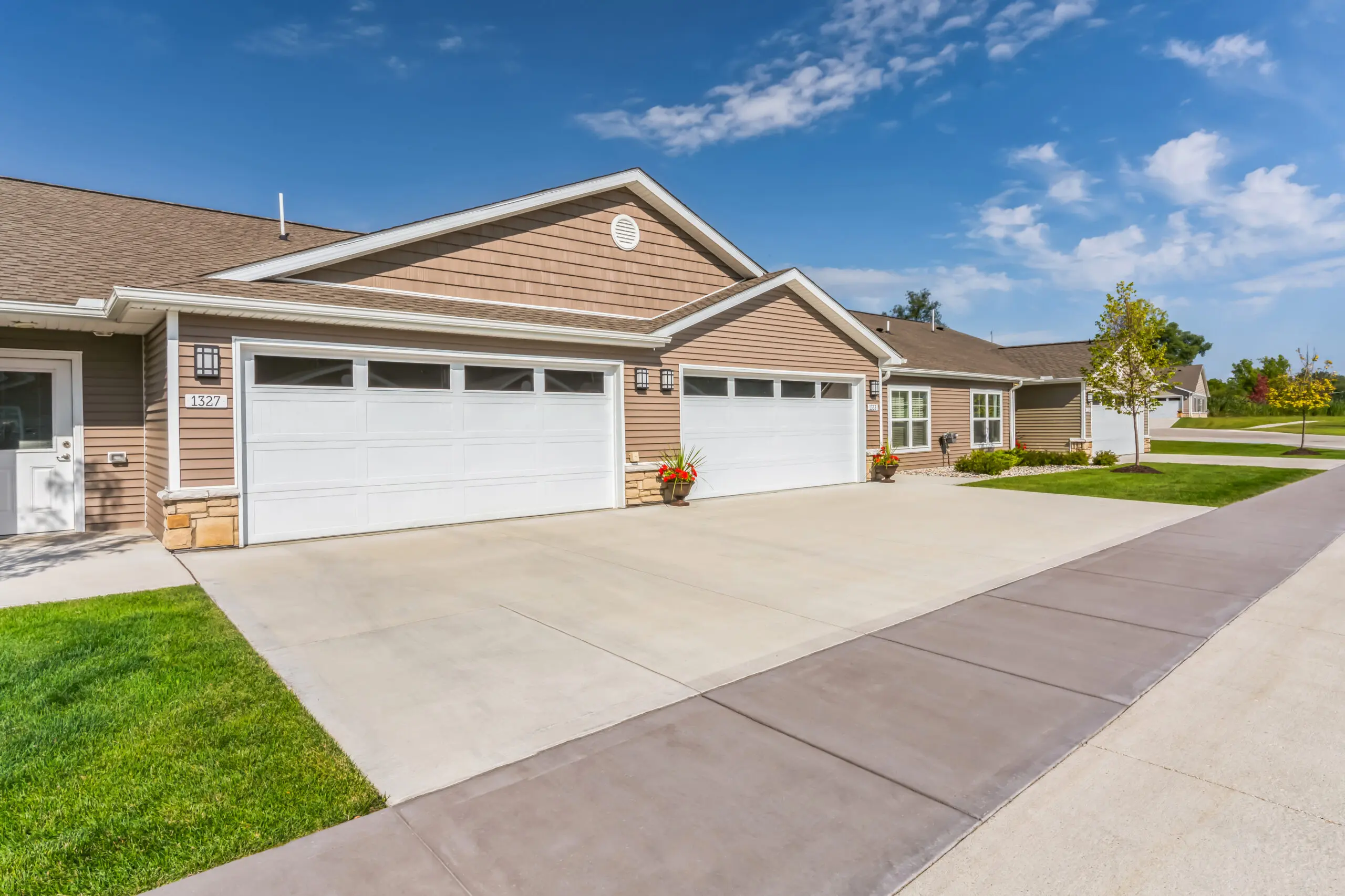Redwood’s David Conwill shares highlights from 20 years of successful financing deals with Lument’s Andy Warnock and team.
As institutional capital flows into the build-to-rent (BTR) sector, one company continues to deliver consistent returns and high-quality housing at scale: Redwood Living. With a disciplined, ground-up development model and a proven track record of stable performance through economic cycles, Redwood is redefining what it means to invest in BTR. Backed by nearly $3 billion in long-term financing, a vertically integrated operating model, and over a 20,000-home portfolio, Redwood offers investors the rare combination of recession-resilient assets, durable income streams, and long-term value creation.
The U.S. BTR market is growing, with investors deploying more than $30 billion into the sector in recent years amid a wave of institutional interest. The single-family BTR market hit a record of 39,000 newly completed homes for rent in 2024, a year-over-year increase of 15.5%[i]. Against that backdrop, Redwood is capitalizing on growth opportunities in select regions with strategic land investments and carefully managed development projects.
Through a two-decade partnership with Lument senior managing director, Andy Warnock, Redwood has expanded its operations and portfolio from a handful of projects in Ohio to 160+ neighborhood locations around the country. To date, the private, 100% ground-up development and property management company has built more than 20,000 rental homes throughout the Midwest and Southeast in Ohio, Michigan, Indiana, Iowa, Kentucky, Nebraska, Illinois, and the Carolinas.
Lument works closely with Redwood founder and CEO, Steve Kimmelman, executive vice chairman, David Conwill, and their team to support the company’s continued growth with $2.8 billion-plus in total financing over nearly 20 years. This includes transactions with the agencies and HUD/FHA, as well as CMBS, life insurance, bridge, and new construction loans.
This ongoing partnership is helping create more newly built homes at a time when the country’s housing crisis calls for sustainable solutions.
“Our greatest asset is our people,” says Conwill, who lead’s Redwood’s capital and financing strategies. “Their commitment and consistency are what power our growth. By working closely with stakeholders, we’ve been able to create remarkable Redwood Neighborhoods across suburban America while delivering steady returns to our investors. It all comes down to great people, smart locations and sound capital strategy.”
Throughout 2024, Redwood delivered 12 new apartment neighborhoods that opened or are nearing completion across six states and welcomed over 7,600 residents to new and existing neighborhoods.
Conwill sat down with Lument to talk about the company’s prolific partnership with Andy and his team in Ohio, as well as the evolution of Redwood’s long-term BTR growth strategy.

Lument: When did your teams originally meet, and can you walk us through your first financing deal together?
Conwill: Until we met Andy, an up-and-comer at RED Capital Group (a Lument predecessor), we refinanced our first few deals with CMBS conduit loans. He introduced us to Fannie Mae, who provided compelling terms as an alternative to CMBS, especially considering our long-term strategy. Andy flawlessly guided Redwood through the process as we closed loans throughout northern Ohio.
Our first deal with Andy was a watershed moment, and from there we started learning more about HUD/FHA and the agencies. Soon after, we essentially presented all available refinance opportunities exclusively to Andy, who represented Redwood in the market.
Lument: How much has Redwood’s portfolio and geographic footprint grown since that first transaction?
Conwill: We just celebrated our 20,000-home milestone and we are leasing at 162 Redwood Neighborhoods.
Our first Redwood Neighborhood — which features our signature single-story, two-bedroom, two-bathroom design with an attached garage — came to life in Akron in the early 2000s. From that first project until 2009, we developed approximately a dozen neighborhoods throughout the Cleveland, Akron, and Toledo suburbs through one-off deals with various investors and developers. After 2009, the global financial crisis decimated land values, and the economy was in shreds. Many builders, investors, and lenders were eager to unload land — even outstanding sites — to capable and unscathed developers who had the wherewithal to create viable projects. Meanwhile, demand was exceeding supply for our existing Redwood Neighborhoods, compelling us to grow.
Lument: Tell us more about those opportunities and how you were able to capitalize on them.
Conwill: Steve Kimmelman, Redwood founder and CEO, and I met in 2001 during the construction of Redwood’s first neighborhood and immediately became friends, which eventually led to us becoming partners. Around 2008, we formulated a growth plan as partners to grow to 10,000 units. It was our mantra — 10,000 units! I often described my mindset during those early growth years as “entrepreneurial naivety,” laser-focused on growing to 10,000 units despite the headwinds and lack of knowledge. So naturally, I operated as both a player and coach — finding sites, raising funds, hiring teammates, etc., while helping Steve lead Redwood.
Lenders were taking back troubled assets, developments stagnated, and municipalities otherwise predisposed against development were more open to rezoning to for BTR communities. By 2012, we found accretive capital sources, hired amazing talent, and established formal strategic planning initiatives propelling us to tremendous growth and success. It was a perfect storm.
Andy is one of my best friends, first and foremost, and secondarily, a tremendous lending partner. We are aligned on virtually all fronts, in business and in life. Andy has always been one of my most trusted advisors, conversing often about capitalizing Redwood deals, finding great sites, and overarching strategies. Andy has been a top-tier lending partner throughout our journey. We have built a market-leading permanent financing platform, consolidating Redwood’s debt strategy under one trusted source: Lument.
Lument: What are the biggest milestones from your years working together and how has your professional relationship evolved?
Conwill: I remember Lument created a plaque that read something like “12 Loans Closed in 90 Days,” which was during our initial hyper growth phase. We often reflected during those times that we were simultaneously painting and flying the plane. Ironically, even though Steve and I once thought 10,000 units was our big hairy audacious goal, once eclipsed in 2019, we were already on to our next major milestone: 20,000 units.

Lument: How have Redwood’s business and product evolved over the past 20-plus years?
Conwill: Even after years of expansive growth and continuous improvement building Redwood’s infrastructure, we are still the same company from a core values and vision perspective. We’re unique — especially in real estate — in that we do only one kind of product: remarkable apartment neighborhoods. I always liken it to the food industry. We’re like Chipotle. You can go work for or buy stock in a company called Chipotle, and what that company does is offer the same experience in Medina, Ohio, or Cancun, Mexico, or San Diego, California. That’s what Redwood is. Even as we continue to innovate and improve our apartment homes, every single location is a Redwood Neighborhood with similarly designed buildings, architecture, layouts, and configurations.
Our neighborhood managers and service technicians are all trained to provide a consistent resident experience across all neighborhoods. Everything is branded, which is unique in the development industry. You don’t live in a Woodland Grove or Winsor Point; our company is called Redwood, and you live in a Redwood. That could be Redwood Brunswick or Redwood Crystal Lake. We’ve evolved over the years to unify around that singular brand and core value: do one thing really well. Our early days were more entrepreneurial. We were building out infrastructure while we were growing. We’re still continuously improving and modifying as we scale and streamline.
Lument: You and Andy’s team recently closed a $31.2 million hybrid bridge/construction loan for a newly built neighborhood in Dayton, Ohio. Is there always a deal in the works between Redwood and Lument?
Conwill: Always. There are Lument employees who are working on Redwood deals every day, year-round — whether it’s managing the pipeline, garnering quotes, underwriting, or closing. There is that much volume, and our teams are that closely threaded together. Lument is essentially our debt portfolio manager as well.
There are times when we have done deals with other lenders to explore new options. But at the end of the day, we ask for outstanding service. We ask for Lument to represent us exceptionally in the marketplace, and we ask them to clear the market and provide us all available lending options, including Fannie, Freddie, HUD/FHA and balance sheet. And that’s what Lument does.
The Dayton deal you reference is a good example of why we keep coming back to Lument. Through strategic conversations with Andy, we proposed a novel balance sheet loan option to combine a stabilized first phase of a neighborhood with the construction of a second phase. The income production from the first phase made the overall financing exceptionally attractive and sets the project up for a combined permanent financing in years to come.
Lument: It’s helpful for other investors to hear that level of confidence. What are the key ingredients for successful BTR development?
Conwill: Geographical selectivity matters a whole lot for build-to-rent. We’re still building in all our markets and will continue to grow in those as we expand to others. Each market has its own pace, of course.
In addition, part of our success has to do with Redwood’s culture, which is about continuous improvement, intellectual curiosity, transparency, high integrity, authenticity, and being a good teammate. If Lument were to call up and say, “Hey, you’ve got a project that’s less than 80% occupied and moving a bit slower than expected,” we don’t sugarcoat it. We stand up and own what’s happening and focus on how to fix it.
Lument: How have debt and equity strategies changed for Redwood in this unpredictable market cycle?
Conwill: Aside from some potential tariff impacts on lumber and other material costs, ideally, we will get into a better interest-rate environment and be able to do a lot of refinancing at a lower cost of capital. Additionally, we believe our asset class is a great hedge against inflation and a potential recession from a housing perspective.
I see the market volatility and just think how blessed my team and I are to have a portfolio that’s not directly correlated with equities. We’re happy to own single-story assets that are well-managed, well-operated, and that have historically generated great cashflow with tremendous tax benefits. We have been able to obtain tremendous financing along the way (especially post-COVID when rates dipped below 3%) and make an immense impact in society by creating quality rental housing with attached garages. Today, Redwood Neighborhoods are accepted in suburban America for folks across all walks of life who choose to rent and simplify their living.
As Redwood continues to scale with discipline and purpose, its legacy of delivering quality rental housing and steady investor returns speaks for itself. With 2,000 new homes in development and a trusted network of capital partners, Redwood remains one of the most compelling opportunities in the BTR market.
For those seeking resilient, long-term returns through passive real estate investing, Redwood offers a path worth exploring.
[i] Yardi Matrix.
